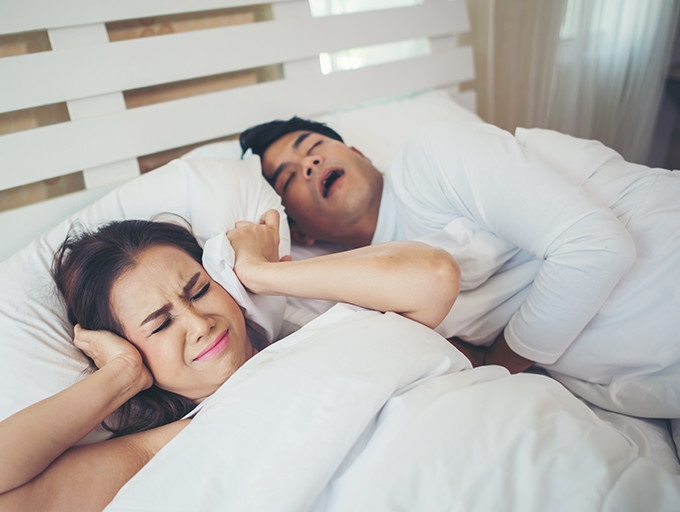 What is snoring?
What is snoring?
Snoring is a common occurrence during sleep, characterized by loud sounds caused by the vibration of soft tissues in the upper airway. These vibrations occur when air flows through the narrowed parts of the respiratory tract during breathing. This process may briefly reduce oxygen levels, often during inhalation, although snoring sounds can also happen during exhalation.
While snoring is common, its severity and health impact can vary. It may be mild, infrequent, and harmless, or it could signal a more serious underlying sleep-related breathing disorder. Over a quarter of adults snore regularly. Snoring may also be disruptive to your partner.
Obstructive Sleep Apnea (OSA) is a condition where the airway becomes blocked or collapses during sleep, leading to recurrent breathing difficulties.
Snoring is one of the most common symptoms of OSA, but not everyone who snores has OSA. OSA-related snoring tends to be loud and may sound like choking, sneezing, or gasping.
While not all snorers have OSA, if snoring is accompanied by any of the following symptoms, it may indicate the need for medical evaluation for OSA:
Why do certain individuals snore while others don't? Snoring typically results from physical traits that narrow the upper airway. These include enlarged tonsils, a bulky tongue, or excess fat around the neck. Anatomical variations, such as a deviated nasal septum or a recessed chin, can also increase susceptibility.
When the muscles of the throat relax during sleep, the airway becomes narrower. As air passes through, it causes the surrounding soft tissues to vibrate. These vibrations generate the snoring sound. Since everyone's airway structure and muscle tone vary, some people are naturally more prone to snoring than others.
High-risk factors for snoring:
While occasional snoring is typically harmless, frequent and loud snoring may signal an underlying problem that requires attention. Fortunately, there are several low-cost or self-managed strategies to help reduce or eliminate snoring.
Continuous Positive Airway Pressure (CPAP) device is a widely used and highly effective treatment for adults with sleep apnea and related snoring. CPAP machines deliver a steady stream of pressurized air through a mask to keep the airway open during sleep, preventing collapse or obstruction.
Bi-level Positive Airway Pressure (BiPAP/BPAP) machines operate similarly to CPAP but provide different pressure levels for inhalation and exhalation, offering greater comfort for users, especially those with additional respiratory conditions.
Automatic Positive Airway Pressure (APAP) devices dynamically monitor your breathing and automatically adjust air pressure throughout the night to optimize comfort and effectiveness.
CPAP, BiPAP, and APAP therapies are clinically proven to reduce or eliminate snoring caused by sleep apnea. These devices should be prescribed and adjusted under the supervision of a medical professional. Proper calibration based on your sleep data ensures optimal airflow and comfort. Collaborating with a sleep specialist or technician is essential for initial setup, mask fitting, and ongoing support to achieve the best treatment outcomes.

